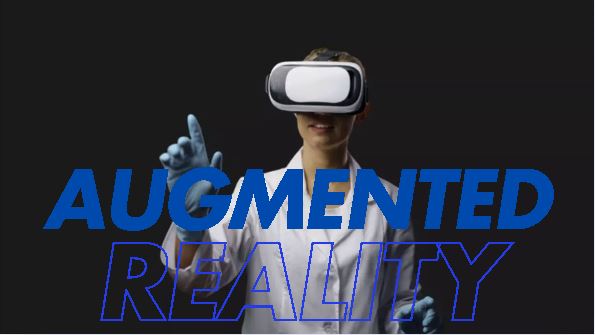Augmented Reality (AR) is revolutionizing how we interact with the world by overlaying digital information onto real-world environments. From gaming and retail to healthcare and education, AR is transforming industries, creating immersive experiences, and redefining innovation.
This article explores the essence of AR, its practical applications, benefits, challenges, and the exciting possibilities it brings to the digital landscape.
Augmented Reality (AR) is a technology that enhances the real world by overlaying digital elements such as images, sounds, or data onto physical environments. This is achieved using devices like smartphones, tablets, AR glasses, and headsets.
Unlike Virtual Reality (VR), which immerses users in a fully digital world, AR blends virtual content with the real world, providing an enriched and interactive experience.
Applications of AR
Healthcare:
AR aids in medical training by allowing students to visualize complex anatomy and perform simulated surgeries. During operations, AR systems provide surgeons with real-time data and 3D visualizations, improving precision.
Retail:
Retailers use AR to create immersive shopping experiences. Virtual fitting rooms enable customers to try on clothes or accessories without stepping into a store. IKEA’s AR app allows users to place virtual furniture in their homes before purchasing.
Gaming and Entertainment:
Games like Pokémon GO showcase AR’s potential by blending digital gameplay with real-world environments. AR is also being used for immersive storytelling and virtual concerts.
Education:
AR transforms learning by making abstract concepts tangible. For example, AR apps bring historical events to life or enable students to explore 3D models of molecules.
Real Estate:
AR simplifies property buying by allowing potential buyers to take virtual tours of homes and view augmented property features.
Manufacturing and Maintenance:
Technicians use AR-guided systems to overlay instructions on machinery, improving efficiency and reducing errors.
Benefits of AR
- Enhanced Engagement:
AR captivates users by merging physical and digital interactions, creating memorable experiences. - Improved Efficiency:
Real-time information and guidance provided through AR can streamline workflows in industries like healthcare and manufacturing. - Cost Savings:
AR reduces costs by minimizing the need for physical prototypes, travel, and training equipment. - Accessibility:
With widespread adoption of smartphones and tablets, AR is more accessible than ever before. - Innovation Potential:
AR fosters creativity and innovation, enabling businesses to reimagine products, services, and customer engagement.
AR in Consumer Technology
AR has become increasingly mainstream, thanks to advances in consumer technology. Popular devices that support AR include:
- Smartphones and Tablets: Platforms like Apple’s ARKit and Google’s ARCore enable developers to create AR experiences.
- AR Glasses: Devices like Microsoft HoloLens and Magic Leap enhance real-world interactions.
- Wearables: Smartwatches and other wearable tech integrate AR for real-time feedback and notifications.
How AR Works
AR technology relies on a combination of hardware and software to overlay digital content onto the real world. Key components include:
- Cameras and Sensors: Capture the user’s environment to map the surroundings.
- Processors: Analyze data and generate AR overlays.
- Displays: Project digital elements onto real-world scenes.
- AR Software: Platforms like Unity or Vuforia create AR experiences by leveraging image recognition, tracking, and rendering.
Challenges of AR Adoption
While AR holds immense promise, its widespread adoption faces hurdles:
- High Development Costs: Creating quality AR experiences requires significant investment.
- Technical Limitations: AR relies heavily on accurate tracking and high processing power, which can be challenging on some devices.
- User Adoption: Educating users and convincing them of AR’s value is an ongoing challenge.
- Privacy Concerns: The data collection required for AR experiences raises potential privacy issues.
Future Trends in AR
- AR in the Metaverse:
AR will play a pivotal role in blending physical and virtual spaces within the metaverse. - AI and AR Integration:
AI will enhance AR experiences through better object recognition, personalization, and dynamic interactions. - 5G Connectivity:
Faster, low-latency networks will enable seamless AR experiences in real time. - AR Wearables:
Advances in lightweight, ergonomic AR glasses will make AR more practical for daily use. - Enterprise AR:
Businesses will increasingly adopt AR for training, collaboration, and remote assistance.
FAQs
What is Augmented Reality used for?
AR is used in various fields, including gaming, retail, healthcare, education, and manufacturing, to enhance real-world experiences.
How does AR differ from VR?
AR overlays digital elements onto the real world, while VR immerses users in a fully virtual environment.
Is AR expensive to implement?
While initial development costs can be high, AR is becoming more affordable with advancements in technology.
What are the key devices for AR?
AR can be accessed via smartphones, tablets, AR glasses, and wearable devices.
What industries benefit the most from AR?
Healthcare, retail, education, real estate, and manufacturing are among the top industries leveraging AR.
What is the future of AR?
AR will become integral to the metaverse, AI-driven applications, and enterprise solutions, transforming how we interact with the world.
Conclusion
Augmented Reality (AR) is not just a technological trend; it’s a paradigm shift in how we engage with digital and physical spaces. With its ability to enhance real-world interactions, AR is reshaping industries, unlocking creativity, and making everyday experiences more interactive and engaging. As AR continues to evolve, its potential to transform both business and personal life is limitless.

